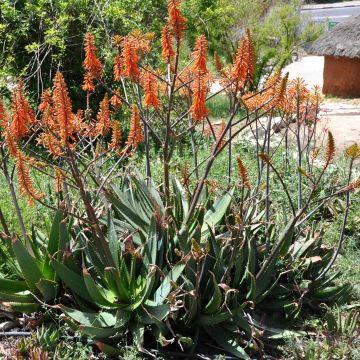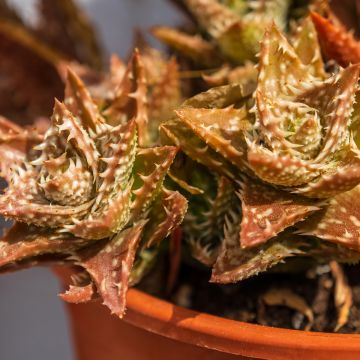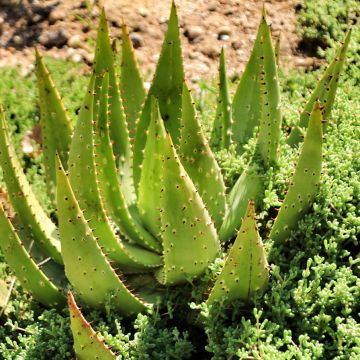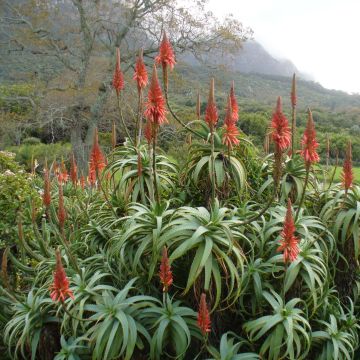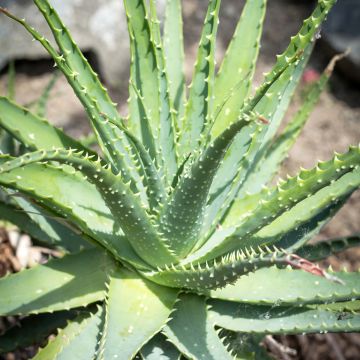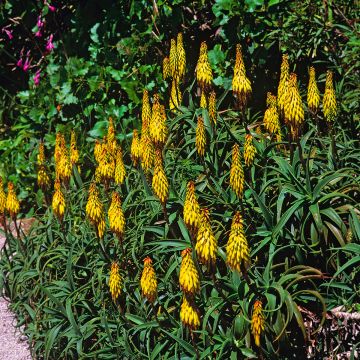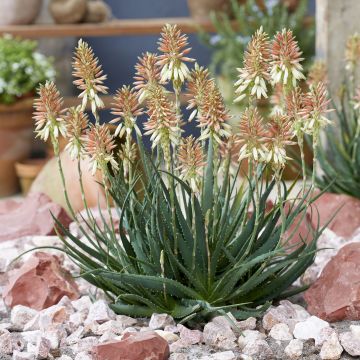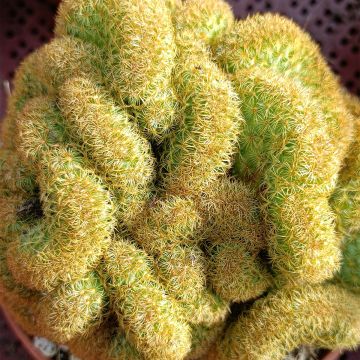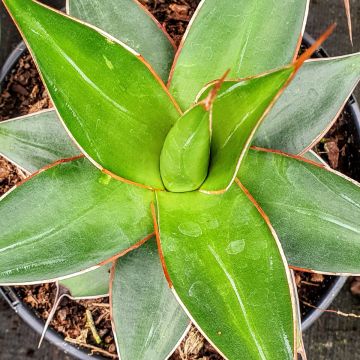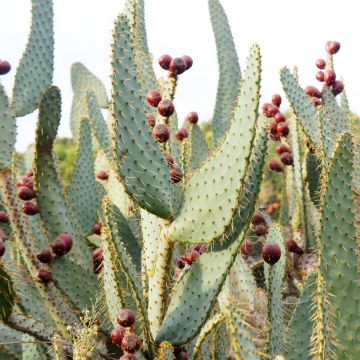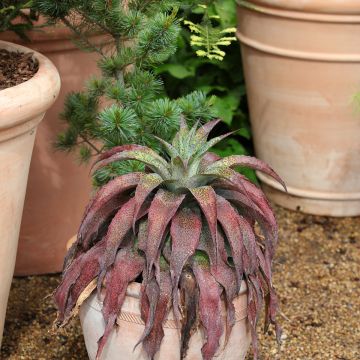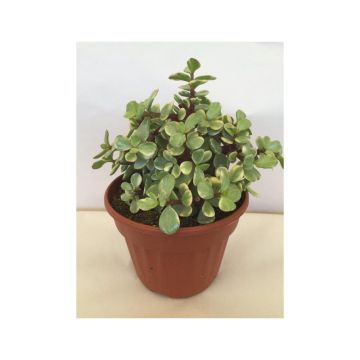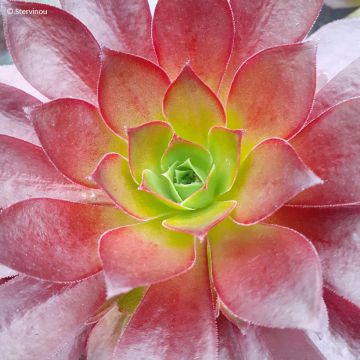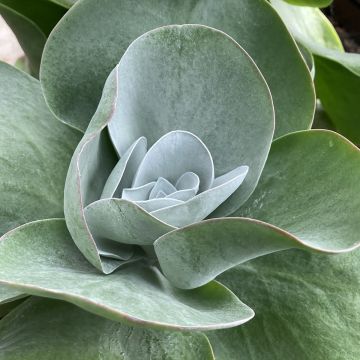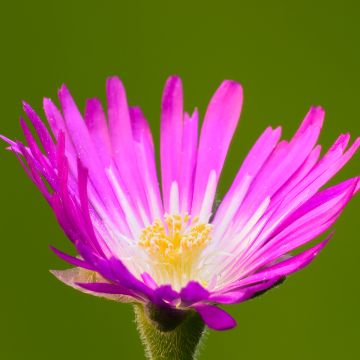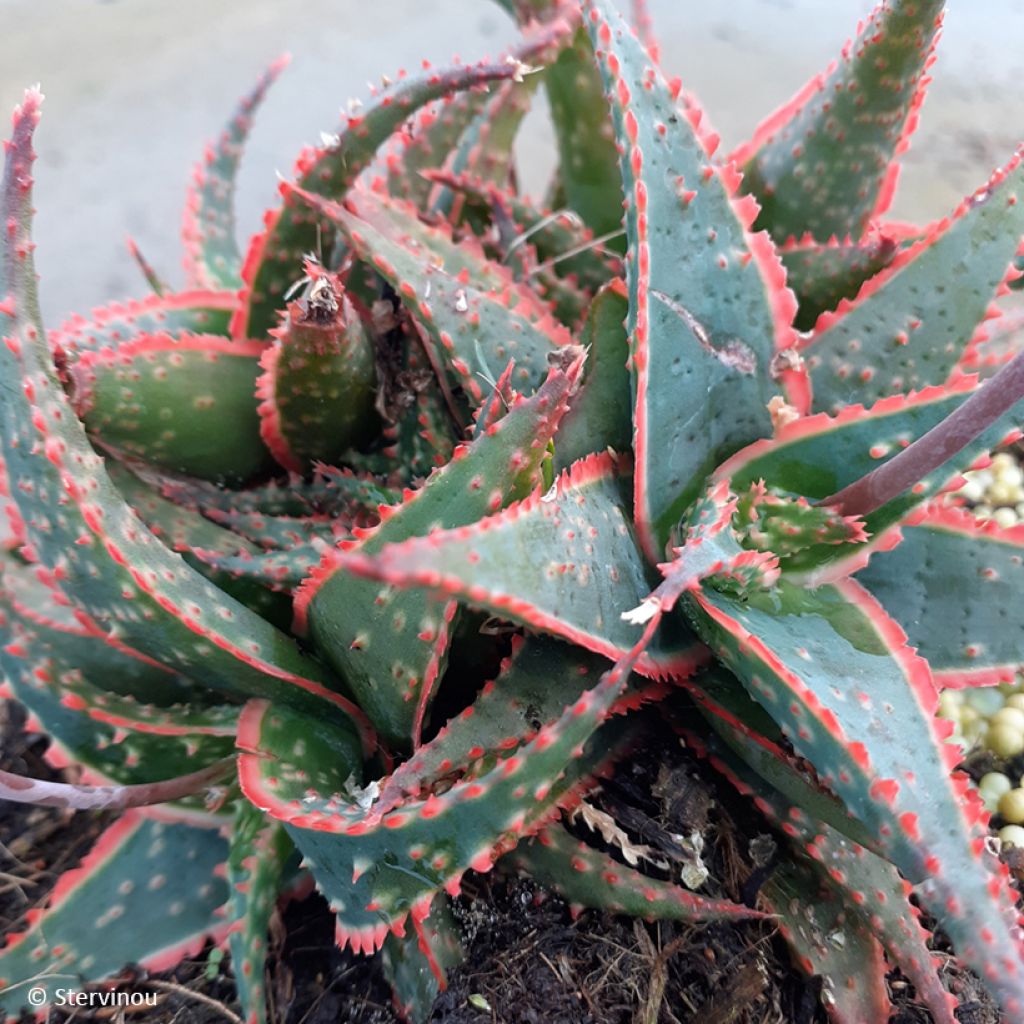

Aloe Christmas Carol
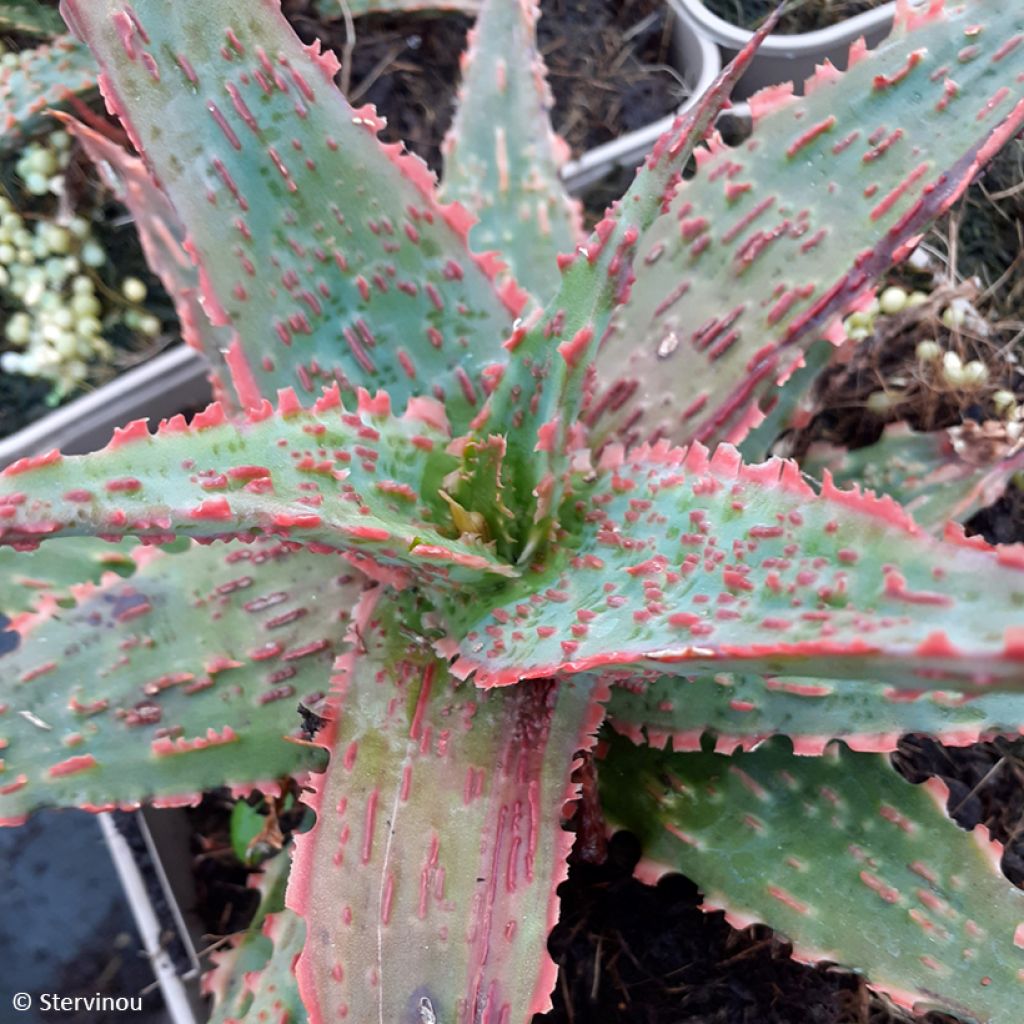

Aloe Christmas Carol
Aloe Christmas Carol
Aloe x Christmas Carol
This item cannot be shipped to the selected country
Delivery charge from €5.90
More information
Schedule delivery date,
and select date in basket
This plant carries a 12 months recovery warranty
More information
We guarantee the quality of our plants for a full growing cycle, and will replace at our expense any plant that fails to recover under normal climatic and planting conditions.
From €5.90 for pickup delivery and €6.90 for home delivery
Express home delivery from €8.90.
Does this plant fit my garden?
Set up your Plantfit profile →
Description
Aloe 'Christmas Carol' surprises and charms with its dark star-shaped silhouette, enhanced by vibrant colours. This succulent plant forms a low rosette consisting of long, stretched triangular leaves. Their dark green hue starkly contrasts with a red margin and a number of small bumps that punctuate its surface in yellow, orange, or purple depending on sun exposure. The plant also produces a graceful flowering made up of small tubular flowers, in red or orange, hovering above the rosette at the end of a slender floral stem. Compact, it is easily grown in a pot to protect it in winter, only plant it in the ground in areas where frost is nearly absent.
The Aloe genus has been successively classified in different plant families to now be part of the Asphodelaceae family, which includes around fifteen other genera (according to classifications), some very ornamental, such as Kniphofia (Tritoma) with its superb bright inflorescences, or the famous New Zealand Flax (Phormium), highly appreciated for its decorative ribbon-like leaves. There are over 500 species of Aloe mainly native to Africa and Madagascar, encompassing creeping plants or more rarely, tree-like ones like Aloe bainesii.
Aloe 'Christmas Carol' is a horticultural hybrid obtained by Kelly Griffin, an expert in Agave and related plants, whose exact parentage is unknown (one of the parents could be the Aloe 'Dorian Black'). This rather slow-growing variety develops in the form of a rosette which, at maturity, reaches about 30 cm in all directions, while sprouting from the base to extend and form a low clump. Its somewhat strange appearance may remind you of certain starfish found in tropical waters. This Aloe unfurls long leaves which are widest at the base, at the point of insertion into the rosette, and then gradually taper to a point at the tip, forming a very elongated triangle. These fleshy leaves tend to curve downwards or upwards, even laterally. Their colour fluctuates depending on the amount of sunlight they receive. Generally a bright to dark green, they are edged with irregular protrusions, in the form of single or double thorns, often in a crimson red which starkly contrasts with the surface. This surface is covered in numerous bumps whose colour varies between yellow, orange, or purple, completing the plant's uniqueness.
The plant flowers in summer and often in autumn depending on the climate. A slender floral stem rises from the rosette, grey-green in colour, simple or sometimes even branched, supporting from ten to over twenty flowers. They are tubular, 2.5 to 3 cm long, consisting of fused sepals that only open at the tip and come in various colours, ranging from salmon pink to lighter or intense red. Separated from the stem by a slender petiole, the flowers possess a certain grace and provide an additional colourful touch to the plant.
A superb compact Aloe well suited for pot cultivation, 'Christmas Carol' intrigues and attracts with its original appearance. It will adorn balconies and terraces in the summer and can then be enjoyed indoors in winter, in a frost-free, bright room or conservatory. If you live in an area where frost is brief and light (-1°C to -2°C), you can integrate it into a sunny rockery to create a scene where rocks and plants coexist harmoniously. Plant it alongside other distinctive plants such as the famous Mother-in-Law's Cushion (Echinocactus grusonii), a spherical cactus covered in decorative spines, or the sculptural Agave victoriae reginae, with a rosette of rare geometric perfection made up of green leaves subtly edged in white. Cover the ground with a variety of Delosperma, low-growing succulents with generous and long-lasting flowering, and place some taller plants to add depth to your scene. A Yucca rostrata 'Sapphire Skies' with foliage even bluer than the species will form a strikingly architectural ball of vegetation after a few years in the ground, gradually rising over time.
Report an error about the product description
Aloe Christmas Carol in pictures


Flowering
Foliage
Plant habit
Botanical data
Aloe
x
Christmas Carol
Asphodelaceae
Cultivar or hybrid
Other Aloe
Planting and care
Like all "succulent" plants, aloes thrive in bright sunlight and very well-drained, even poor and dry soil. Aloe 'Christmas Carol' will thrive in very gravelly soil, composed mainly of coarse sand mixed with garden soil and a bit of very decomposed leaf compost. A light, non-clayey soil, low in organic matter, highly filtering, even limestone, will suit it. As it is frost-sensitive, it can only be planted in the ground in the mildest areas. Elsewhere, it should be grown in a pot and stored in a very bright, lightly or unheated room during winter, and kept dry.
Planting period
Intended location
Care
This item has not been reviewed yet - be the first to leave a review about it.
Cacti and succulents
Haven't found what you were looking for?
Hardiness is the lowest winter temperature a plant can endure without suffering serious damage or even dying. However, hardiness is affected by location (a sheltered area, such as a patio), protection (winter cover) and soil type (hardiness is improved by well-drained soil).

Photo Sharing Terms & Conditions
In order to encourage gardeners to interact and share their experiences, Promesse de fleurs offers various media enabling content to be uploaded onto its Site - in particular via the ‘Photo sharing’ module.
The User agrees to refrain from:
- Posting any content that is illegal, prejudicial, insulting, racist, inciteful to hatred, revisionist, contrary to public decency, that infringes on privacy or on the privacy rights of third parties, in particular the publicity rights of persons and goods, intellectual property rights, or the right to privacy.
- Submitting content on behalf of a third party;
- Impersonate the identity of a third party and/or publish any personal information about a third party;
In general, the User undertakes to refrain from any unethical behaviour.
All Content (in particular text, comments, files, images, photos, videos, creative works, etc.), which may be subject to property or intellectual property rights, image or other private rights, shall remain the property of the User, subject to the limited rights granted by the terms of the licence granted by Promesse de fleurs as stated below. Users are at liberty to publish or not to publish such Content on the Site, notably via the ‘Photo Sharing’ facility, and accept that this Content shall be made public and freely accessible, notably on the Internet.
Users further acknowledge, undertake to have ,and guarantee that they hold all necessary rights and permissions to publish such material on the Site, in particular with regard to the legislation in force pertaining to any privacy, property, intellectual property, image, or contractual rights, or rights of any other nature. By publishing such Content on the Site, Users acknowledge accepting full liability as publishers of the Content within the meaning of the law, and grant Promesse de fleurs, free of charge, an inclusive, worldwide licence for the said Content for the entire duration of its publication, including all reproduction, representation, up/downloading, displaying, performing, transmission, and storage rights.
Users also grant permission for their name to be linked to the Content and accept that this link may not always be made available.
By engaging in posting material, Users consent to their Content becoming automatically accessible on the Internet, in particular on other sites and/or blogs and/or web pages of the Promesse de fleurs site, including in particular social pages and the Promesse de fleurs catalogue.
Users may secure the removal of entrusted content free of charge by issuing a simple request via our contact form.
The flowering period indicated on our website applies to countries and regions located in USDA zone 8 (France, the United Kingdom, Ireland, the Netherlands, etc.)
It will vary according to where you live:
- In zones 9 to 10 (Italy, Spain, Greece, etc.), flowering will occur about 2 to 4 weeks earlier.
- In zones 6 to 7 (Germany, Poland, Slovenia, and lower mountainous regions), flowering will be delayed by 2 to 3 weeks.
- In zone 5 (Central Europe, Scandinavia), blooming will be delayed by 3 to 5 weeks.
In temperate climates, pruning of spring-flowering shrubs (forsythia, spireas, etc.) should be done just after flowering.
Pruning of summer-flowering shrubs (Indian Lilac, Perovskia, etc.) can be done in winter or spring.
In cold regions as well as with frost-sensitive plants, avoid pruning too early when severe frosts may still occur.
The planting period indicated on our website applies to countries and regions located in USDA zone 8 (France, United Kingdom, Ireland, Netherlands).
It will vary according to where you live:
- In Mediterranean zones (Marseille, Madrid, Milan, etc.), autumn and winter are the best planting periods.
- In continental zones (Strasbourg, Munich, Vienna, etc.), delay planting by 2 to 3 weeks in spring and bring it forward by 2 to 4 weeks in autumn.
- In mountainous regions (the Alps, Pyrenees, Carpathians, etc.), it is best to plant in late spring (May-June) or late summer (August-September).
The harvesting period indicated on our website applies to countries and regions in USDA zone 8 (France, England, Ireland, the Netherlands).
In colder areas (Scandinavia, Poland, Austria...) fruit and vegetable harvests are likely to be delayed by 3-4 weeks.
In warmer areas (Italy, Spain, Greece, etc.), harvesting will probably take place earlier, depending on weather conditions.
The sowing periods indicated on our website apply to countries and regions within USDA Zone 8 (France, UK, Ireland, Netherlands).
In colder areas (Scandinavia, Poland, Austria...), delay any outdoor sowing by 3-4 weeks, or sow under glass.
In warmer climes (Italy, Spain, Greece, etc.), bring outdoor sowing forward by a few weeks.

































